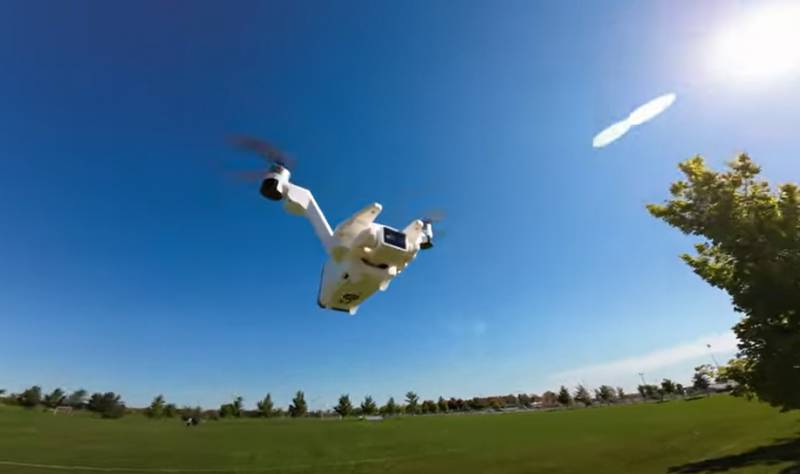An American company has developed ammunition for detecting and destroying small drones

The military conflict in Ukraine has shown the great importance and high efficiency of the use of unmanned aerial vehicles for various purposes and classes in modern warfare. At the same time, it became obvious that to shoot down drones, especially small ones, with existing air defense systems is rather difficult and very expensive. Looks like a solution to the problem of destruction drones small size found in the American defense company Grumman Corporation.
A representative of the corporation told National Defense magazine about the successful testing of 30x133 mm dual-use high-explosive fragmentation cartridges for the M230LF Bushmaster machine gun. The ammunition is equipped with a small sensor that detects drones, then an explosion occurs, with the drone being damaged by shrapnel, rather than a direct hit by a projectile.
The company is keeping exactly how the new round works under wraps, but according to a Northrop Grumman spokesman, the RF sensor inside each round is based on sensing technology "that has been around for decades." Currently, new cartridges have already begun to enter service with the US Army.
In addition to being highly effective against small drones, the new munition is said to be unique in that its cost is several times lower than other systems for destroying UAVs. For automatic targeting, a special ACE program is used, but, as a representative of the developer company emphasized, the M230LF Bushmaster cartridge and machine gun can work with any guidance system.
The new ammunition has proven to be highly effective in destroying single targets, but the guidance system is not yet capable of working out with high quality on a large cluster of UAVs. The developers are currently trying to fix this issue.
the representative said armory company.
Information